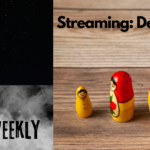The digital marketing landscape has been continuously evolving and mostly growing for 10 consecutive years. Pandemic-related speedbumps aside, it’s primarily a story of uninterrupted prosperity.
But now that we’ve turned the corner to resilient economic and earnings data, an expected end to Fed rate hikes, lower market volatility, and a broader recovery in the equity markets, the outlook for 2024 is likely to be a banner year for digital advertising and marketing.
Here are the key indicators. First, Meta reported record-breaking revenue in Q3 2023, raking in more than $34 billion, a jaw-dropping 23% spike year over year. That’s the most it’s ever made in a quarter since going public.
Meanwhile, Google weighed in with $59.65 billion, Amazon with $11.6 billion, and Microsoft with $8.2 billion, all reporting strong earnings on robust topline revenue in Q3 2023 in their digital advertising and marketing businesses.
As the most accountable medium in terms of measuring phone calls, form fills, web traffic, social media performance, and direct e-commerce, digital advertising spending will likely continue to rise on the back of increased demand from marketers who want proof that their dollars are working for them.
Continuing to fuel growth, social media platforms proliferate, impacting consumer behavior and preferences. It has become a dominant channel for brands to reach and engage with their target audiences and drive qualified traffic to their sites while gathering valuable data to improve future marketing efforts.
With all the hoopla about the death of cookies rendering digital marketing ineffective, the sophistication of big data’s algorithms, geotargeting, and insights into consumer behavior advances unabated.
And since smart marketers fish where the fish are going, the fundamental strength of the market supports a growth story for years to come.
The number of social media users worldwide exploded from 0.97 billion in 2010 to 4.48 billion in 2021, representing a total growth of 362% per Statista.
Delivering Consumers When They’re Ready To Buy Stuff
Another major marketing technology that has transformed digital marketing from a novel experiment into a multi-billion dollar science in the past 10 years is search engine optimization (SEO) and search engine marketing (SEM).
SEO and SEM are tactics that focus on improving the visibility and ranking of websites and web pages on search engines like Google and Bing.
As search engines have introduced new algorithms, features, and products that change the way they rank and display results, SEO and SEM have become more complex and competitive over the years.
Comfort Zone Isn’t Safe
Small and mid-sized businesses on the sidelines are being eclipsed by more aggressive marketers who continue to experiment and optimize results in real time. The competitive gap will only expand as the pace of innovation accelerates.
Barring any major new upsets in data privacy regulations, consumer expectations, market competition, and global events that haven’t already been priced in, the industry is poised for record profits.
Test, Learn, Adapt and Get Smarter
Digital marketers driving the growth need to stay updated and adaptable to the changing environment and demands of their industries and proactively seek out improvements in marketing capabilities.
What works today, may not work tomorrow so the smartest marketers are always on the prowl for more scale, intelligence, and transparency in their marketing investments.
If competitors get to new marketing technology first they may gain an insurmountable advantage. That’s why it’s so important to reevaluate our relationships with media companies, agencies, and technology providers at regular intervals.
Time To Step On The Gas
Digital advertising spend has been mostly increasing over the past 10 years because it works. In the 10 years before 2022, digital ad spend grew by an average of 20% per year and analysts are forecasting that will level out at a still lucrative 10% annual growth rate through 2027.
In an environment where executives are cutting traditional forms of marketing and advertising and redeploying budgets to digital, that’s a healthy slice of the pie.
Especially when you view its growth rate in the context of a market that is valued anywhere from $763.6 billion to $835 billion by 2026.
The ebbs and flows in digital advertising in the past 10 years is a topic that requires much deeper research and analysis. However, at a 30,000-foot level, we can definitely glean some general insights and spot emerging trends that shaped the digital marketing landscape in the last decade to inform our vision for the next one.
SWOT Report is now Business Intelligence Weekly. The creator and journalist behind the digital publication, Andrew Ellenberg, is President & Managing Partner of Rise Integrated, an innovative studio that creates, produces, and distributes original multimedia content across digital touchpoints. To submit story ideas or ask about custom multimedia publishing, call 816-506-1257, email [email protected], or read more of his work in Forbes. To learn about his company check out this profile story.




